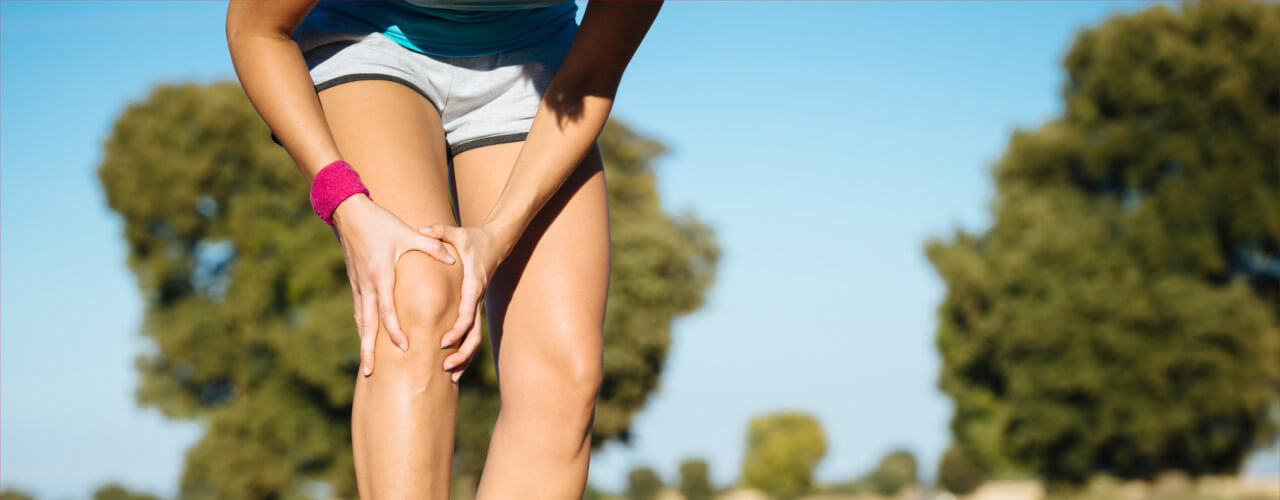Your hips and knees are the largest joints in your body. While many people may experience hip pain or knee pain on their own, it is also common to experience them together as well. You may first notice hip pain on the outside area of the hip, along the outer buttock or upper thigh area. Hip pain can occur whether you are at rest, walking or during any other type of physical activity. Knee pain is another very common reason why people visit our physical therapist each day. In addition to chronic pain, other common symptoms of knee pain include stiffness, swelling popping and general instability. Many physical therapy patients also find that it is difficult or even impossible to fully straighten the knee as well. If you are experiencing hip pain or knee pain, call our offices today to schedule a free physical therapy consultation.
What Are the Common Causes of Hip and Knee Pain?
Although the hip joint is very durable, it can become worn down over time due to age or overuse. As the hip joint becomes more worn down, you are much more likely to experience chronic hip pain. Additionally, a slip and fall can cause the bones in the hip to break and arthritis affects the cartilage in the hip as well. Some other common causes of hip pain include:
- Bursitis
- Tendinitis
- Hip fractures
- Work injuries
- Tendon or muscle strain
- Certain cancers
- Osteonecrosis
- And more
Like hip pain, knee pain is often associated with the normal aging process or overuse. However, chronic knee pain can also be the result of damage to the bony structures that make up the knee joint like the fibula, tibia and femur. Damage to the cartilage and ligaments can also send patients to the physical therapist in search of fast pain relief. Other common causes of knee pain include:
- Arthritis (Osteoarthritis, Rheumatoid arthritis, etc.)
- Sports injuries
- Auto accident injuries
- Bursitis
- Torn meniscus
- Medial plica syndrome
Additionally, if the knee joint somehow becomes dislocated due to a sport or work injury, it can result in lasting knee pain.
How Does Physical Therapy Help Treat Hip and Knee Pain?
If you suffer from ongoing hip or knee pain, physical therapy can help to manage your pain while restoring strength and improving your overall mobility. This safe, effective and non-invasive treatment method is also prescription drug-free, making it ideal for patients of all ages. Studies have shown that the manual techniques and mobilizations used in physical therapy can not only reduce hip and knee pain but reduce inflammation, restore your natural range of motion and strengthen the hip and knee joints.
Our physical therapist will work closely with you to design a physical therapy treatment plan that fits your individual needs. By targeting the root cause of your chronic pain instead of simply treating your symptoms, you can enjoy fast pain relief. For better results, our physical therapist may also recommend using both at-home exercises and passive treatments like heat and ice therapy or electrical stimulation to reduce your chronic pain. While other more invasive treatment methods may call for surgery to relieve your hip and knee pain, this holistic treatment option is safe and gentle. In fact, many people who do end up electing to have surgery to correct a hip or knee injury will still need to use physical therapy to recover and reduce pain.
Learn More About the Benefits of Physical Therapy for Hip and Knee Pain
If you or a loved one is suffering from a debilitating hip or knee injury, physical therapy can help! Our experienced physical therapist has the tools necessary to create a tailor-made treatment plan that will quickly help to reduce your pain and support natural healing without the use of prescription pain medications. Contact our friendly team online today at Oviedo and Orlando, FL centers, for more information or to schedule an initial consultation.






